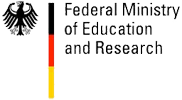| Research Mission: |
The major goal of computer graphics is the creation of photo-realistic synthetic models of reality. Synthetic depictions of seemingly real entities are of utility in various different applications, ranging from electronic prototypes of engineering parts to surreal virtual sets in fantasy movies. Today, computer graphics has already reached an impressive state-of-the-art: For example, it is commonplace that substantial parts of major feature films consist of synthetic renderings.
However, the major bottleneck in today's content production pipeline is still the effort of the human designer: In order to create believable, photo-realistic models, three-dimensional data sets of enormous complexity have to be built, which requires much manual labor of highly-skilled experts. Thus, modeling costs (rather than costs of computational resources) is the main barrier that often still prevents the application of computer graphics techniques.
The objective of this research group is the development of high-level modeling techniques that permit creation and editing of complex three-dimensional models at a high level of abstraction. The goal is to provide tools to the modeler that operate closer to the semantic domain than traditional low-level modeling techniques (which rather operate in the geometric domain). To be able to support a more abstract approach to modeling, the software must to some limited extend "understand" the structure of the models. The idea is to employ techniques from statistical data analysis and machine learning to "learn" the structure of aspects of example models in order to instantiate them again later during editing.
This process is performed in three steps: First, a formal statistical model of the aspect to be analyzed has to be set up. This could describe e.g. the correlation of local geometric features or describe a low-dimensional parameterization of the space of overall shape. Next, example data (e.g. previous models that does not fully met the demands of the modeler, or a data set from a 3d-scanner) is analyzed. The analysis retrieves an estimate of the probability distribution of the statistical model parameters. This knowledge then facilitates a re-instantiation of new models (or parts of models) with a likely (i.e. believable) structure. By applying this analysis to different aspects of the model (ranging from local geometric texture to overall shape), different tools can be devised that support editing of various aspects of the model.
The primary goal of the described research is to create more productive modeling tools for editing scenes with a photo-realistic amount of details. A good high-level modeling tool must provide an algorithmic formalism for "understanding" model aspects. Therefore, as a side effect, the resulting statistical models could possibly also reveal some insight into the structure of real-world artifacts and their human perception.
In 2013 Dr. Michael Wand accepted a faculty position at the university of Utrecht, The Netherlands. Since 2104 Michael Wand has a chair for visual computing at the University of Mainz. |




